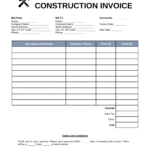A dog collar is far more than just a fashion accessory or a place to attach identification tags. In today’s world, collars have evolved into sophisticated tools that can significantly enhance your pet’s safety and well-being. Modern dog collars now incorporate advanced features like GPS dog collars, allowing you to monitor your dog’s whereabouts in real-time and receive instant alerts if they wander too far from home. Beyond tracking, innovative collars can monitor vital health metrics such as activity levels, sleep patterns, and even heart rate, giving you valuable insights into your dog’s overall condition.
Whether you have an adventurous escape artist who loves to explore, a senior dog requiring health monitoring, or a young pup in need of training support, choosing the right collar with appropriate technology can provide peace of mind and strengthen the bond with your furry companion. Understanding the various features available and how they align with your specific needs is essential to making an informed decision that benefits both you and your dog.
Introduction to GPS Dog Collars
GPS dog collars represent a revolutionary advancement in pet care technology, offering owners unprecedented peace of mind when it comes to their dog’s safety and whereabouts. These intelligent devices use satellite positioning systems to pinpoint your dog’s exact location at any given moment, transmitting this information directly to your smartphone or computer through dedicated apps.
Unlike traditional collars that only hold identification tags, GPS-enabled versions actively prevent loss by allowing you to set up virtual boundaries around your property or neighborhood. When your dog crosses these invisible perimeters, you receive immediate notifications, enabling quick action before they wander too far.
This technology proves invaluable for dogs with a tendency to escape, those living in rural areas with vast open spaces, or during outdoor adventures like hiking and camping where dogs might chase wildlife or become disoriented. Many GPS collars also maintain a location history, letting you review your dog’s movement patterns and favorite spots over time.
For multi-dog households, some systems can track several pets simultaneously through a single interface. The combination of real-time tracking, geofencing capabilities, and historical data makes GPS collars an essential tool for responsible pet ownership in our increasingly mobile world.
The Benefits of a Health-Focused Dog Collar
Health-monitoring collars have transformed how we understand and respond to our dogs’ physical well-being, providing insights that were once only available through veterinary visits. These intelligent collars track essential metrics including daily activity levels, calories burned, rest periods, and sleep quality, creating a comprehensive picture of your dog’s fitness routine.
By establishing baseline patterns for your individual pet, the collar can detect subtle changes that might indicate emerging health issues before visible symptoms appear. A sudden decrease in activity or disrupted sleep patterns could signal pain, illness, or anxiety, prompting you to seek veterinary care earlier when treatment is most effective.
This proactive approach is particularly valuable for senior dogs prone to arthritis or other age-related conditions, as well as breeds susceptible to specific health problems. Some advanced models even monitor scratching and licking behaviors, which can indicate allergies or skin irritations requiring attention.
The data collected syncs with smartphone apps that generate easy-to-read reports and trend analyses, making it simple to share accurate information with your veterinarian during checkups. For dogs recovering from surgery or managing chronic conditions, these collars help you ensure they’re meeting prescribed activity goals without overexertion. Beyond medical benefits, tracking your dog’s exercise helps you adjust walk durations and play sessions to maintain optimal weight and energy levels, contributing to a longer, healthier life together.
The Advantages of a Training Collar
Training collars serve as valuable communication tools that help establish clear boundaries and reinforce positive behaviors, making them particularly effective for dogs who struggle with basic obedience or exhibit challenging behaviors like excessive barking, jumping, or leash pulling. Modern training collars have evolved far beyond outdated punitive methods, now offering humane options that use vibration, sound cues, or gentle stimulation to redirect attention and discourage unwanted actions.
These collars work by providing consistent, immediate feedback that helps dogs associate specific behaviors with consequences, accelerating the learning process significantly compared to voice commands alone. For dogs with selective hearing or those easily distracted by their environment, training collars provide a reliable way to maintain control even at a distance, which proves essential in off-leash situations or emergency scenarios.
Remote-controlled versions allow you to deliver corrections or rewards precisely when needed, reinforcing the connection between action and response that dogs need to understand expectations. Many professional trainers incorporate these tools during structured training programs, particularly for dogs preparing for service work, hunting, or competitive obedience. The key to success lies in proper introduction and consistent application, ensuring your dog understands the collar as a helpful guide rather than a source of fear.
When combined with positive reinforcement techniques like treats and praise, training collars become part of a balanced approach that builds confidence while establishing respectful communication. For stubborn breeds or rescue dogs with ingrained behavioral issues, these collars can mean the difference between a manageable companion and an uncontrollable pet, ultimately strengthening your relationship through mutual understanding and trust.
How Location Monitoring Works
Location monitoring technology in dog collars relies on a combination of GPS satellites, cellular networks, and sophisticated software to deliver accurate real-time positioning data directly to your device. The collar contains a small GPS receiver that communicates with multiple satellites orbiting Earth, triangulating signals to determine your dog’s precise coordinates within a matter of feet.
Once the collar calculates this position, it transmits the information through cellular data networks or radio frequencies to cloud-based servers, which then relay the data to your smartphone app or web dashboard. This process typically updates every few seconds to several minutes depending on your settings and the collar’s power-saving modes. The accompanying mobile applications display your dog’s location on interactive maps, often using familiar platforms that show streets, landmarks, and terrain features for easy reference.
Most systems allow you to customize update intervals, with more frequent tracking consuming battery faster but providing tighter surveillance during critical moments. The geofencing feature works by creating virtual boundaries using GPS coordinates that form invisible perimeters around designated safe zones like your yard or neighborhood. When your dog’s collar detects movement beyond these programmed boundaries, the system immediately triggers push notifications, text messages, or email alerts to ensure you’re aware within seconds of the breach.
Some advanced collars incorporate additional technologies like Wi-Fi positioning for improved accuracy in urban environments where tall buildings might interfere with satellite signals, while others use Bluetooth connectivity for short-range tracking when your dog is nearby. Battery life varies considerably based on tracking frequency and collar features, with most devices lasting anywhere from several days to several weeks between charges, making regular charging routines essential for reliable protection.
Top Features to Look for in a Premium Dog Collar
When investing in a premium dog collar, prioritizing features that align with your dog’s lifestyle and your specific concerns ensures you get maximum value and functionality from your purchase. Real-time tracking capability stands as the foundation of any quality GPS dog collar, providing continuous location updates with minimal delay so you can respond quickly if your dog strays.
Battery longevity deserves careful consideration since collars requiring daily charging become inconvenient and risk leaving your dog unprotected during critical moments, so look for models offering at least several days of operation between charges. Waterproof construction is non-negotiable for active dogs who swim, play in rain, or encounter wet conditions, with ratings of IPX7 or higher ensuring the electronics remain protected during submersion.
Durability matters equally, as collars must withstand daily wear, rough play, and exposure to elements without breaking or malfunctioning, making reinforced materials and quality craftsmanship essential. Geofencing capabilities with customizable boundary sizes let you create multiple safe zones tailored to different locations like home, parks, or vacation properties, with instant alerts when breaches occur.
Activity and health monitoring features add tremendous value by tracking movement patterns, calories, rest periods, and behavioral changes that provide early warning signs of potential health issues. User-friendly mobile applications with intuitive interfaces, clear maps, and accessible data visualization make managing your collar’s features straightforward rather than frustrating.
Multi-pet support becomes crucial for households with several dogs, allowing you to monitor all animals through one platform without purchasing separate subscriptions or devices. Finally, reliable customer support and reasonable subscription costs ensure your investment remains practical and sustainable over the collar’s lifespan, avoiding hidden fees or inadequate assistance when technical issues arise.
How to Choose the Right Dog Collar for Your Pet
Selecting the ideal collar requires careful assessment of your dog’s unique characteristics, lifestyle, and your primary concerns as an owner. Begin by evaluating your dog’s size, breed, and temperament, since a small lapdog has vastly different needs than a large, energetic working breed. Consider your dog’s daily routine and environment—urban dogs navigating busy streets benefit from reflective materials and ID tags, while rural dogs roaming large properties need GPS dog collars to prevent getting lost in expansive terrain.
If your primary worry involves escape tendencies or frequent off-leash activities, prioritize collars with robust location tracking and reliable geofencing alerts that provide immediate notifications. For senior dogs or breeds prone to health issues, collars with comprehensive activity and vital sign monitoring deliver valuable data that helps you detect problems early and maintain optimal wellness.
Dogs struggling with obedience or behavioral challenges may benefit most from training collars that provide consistent correction tools, though these work best when combined with positive reinforcement methods. Assess the collar’s fit carefully, ensuring you can comfortably slide two fingers between the collar and your dog’s neck without excessive looseness that might allow slipping.
Consider practical factors like battery life relative to your charging habits, subscription costs that fit your budget long-term, and whether the accompanying app offers features you’ll actually use rather than overwhelming complexity. Companies like SATELLAI and other reputable brands offer solid warranties and responsive customer support for technical issues, which can be invaluable when you encounter problems. Finally, read reviews from owners with similar dog breeds and situations to understand real-world performance beyond marketing claims.
Safety Tips for Using GPS Dog Collars
Ensuring your GPS dog collar functions safely and effectively requires attention to proper fitting, maintenance, and usage practices that protect your pet’s comfort and well-being. Always adjust the collar to fit snugly but not tightly, maintaining enough space to slide two fingers underneath while preventing the device from rotating or sliding around your dog’s neck, which could cause chafing or allow your dog to slip free.
Regularly inspect the collar for signs of wear, frayed edges, or damaged components that might irritate your dog’s skin or compromise the device’s waterproofing, replacing worn collars promptly to avoid malfunctions. Remove the collar periodically to check for skin irritation, hair matting, or pressure sores beneath the device, especially during the initial adjustment period when your dog is getting accustomed to wearing technology.
Keep the collar charged according to manufacturer recommendations, establishing a consistent charging routine that ensures the device never dies when your dog needs protection most. Avoid leaving GPS dog collars on during crate time, rough play with other dogs, or situations where the collar might snag on objects, potentially causing injury or strangulation hazards. Update the collar’s software and companion app regularly to benefit from security patches, improved features, and bug fixes that enhance performance.
Finally, test the geofencing and alert systems monthly to confirm they’re working correctly, adjusting sensitivity settings as needed to avoid false alarms while ensuring genuine boundary breaches trigger immediate notifications.
Common Mistakes to Avoid When Choosing a Dog Collar
Many dog owners inadvertently compromise their pet’s safety and comfort by making avoidable errors during the collar selection process. One frequent mistake involves choosing collars based solely on appearance or price rather than functionality, leading to purchases that look attractive but fail to meet your dog’s actual needs for tracking, training, or health monitoring.
Overlooking proper sizing creates serious problems, as collars that are too tight cause discomfort, skin irritation, and restricted breathing, while excessively loose collars slip off easily or catch on objects, creating strangulation hazards. Another common error is ignoring your dog’s specific lifestyle requirements—purchasing a basic collar for an escape-prone dog who desperately needs GPS dog collars, or investing in expensive features you’ll never use for a calm indoor pet.
Many owners fail to research subscription costs associated with GPS and cellular-enabled collars, discovering only after purchase that ongoing fees make the device financially unsustainable. Neglecting to verify waterproof ratings before buying proves problematic for active dogs who swim or play in wet conditions, resulting in damaged electronics and wasted money.
Some people also make the mistake of expecting instant results from training collars without proper introduction or consistent application, then abandoning the tool prematurely when their dog doesn’t respond immediately. Finally, purchasing from unknown brands without checking reviews, warranty coverage, or customer support availability often leads to frustration when technical issues arise and assistance is unavailable or unhelpful.
The Future of Dog Collars
The dog collar industry stands on the brink of remarkable innovations that promise to revolutionize how we care for and interact with our pets. Artificial intelligence integration will soon enable collars to learn individual dog behavior patterns and predict potential health issues or escape attempts before they occur, sending proactive alerts to owners.
Biometric sensors are advancing rapidly, with future collars expected to monitor blood pressure, body temperature, and even glucose levels for diabetic dogs, providing veterinary-grade health data continuously. Solar charging capabilities will extend battery life indefinitely for outdoor dogs, eliminating the inconvenience of frequent recharging. Augmented reality features may allow owners to visualize their dog’s perspective and environmental interactions through connected apps.
Two-way communication systems are in development, letting owners remotely deliver voice commands or soothing messages to anxious pets when separated. Enhanced social networking features will connect dog owners in real-time, facilitating playdates and community alerts about lost pets or local hazards. As these technologies mature and become more affordable, the humble dog collar will transform into an indispensable health companion and safety guardian that fundamentally changes the pet ownership experience.
Making the Right Choice for Your Dog’s Safety and Well-Being
Choosing the right e collar for dog training has become an important decision that extends far beyond simple identification purposes. Today’s advanced collars offer a remarkable range of features designed to enhance your dog’s safety, health, and training while providing you with invaluable peace of mind.
Whether you prioritize GPS dog collars for an adventurous escape artist, health monitoring for a senior companion, or training support for a behavioral challenge, the perfect collar exists to meet your specific needs. By carefully evaluating your dog’s unique characteristics, lifestyle requirements, and your primary concerns, you can select a collar that truly adds value to both your lives.
Remember to prioritize proper fit, durability, and features you’ll actually use rather than being swayed by unnecessary bells and whistles. As technology continues to advance, these intelligent collars will only become more sophisticated, offering even greater insights and protection for our beloved companions. Investing time in research and choosing wisely ensures you’ll find a collar that serves as a reliable partner in providing the best possible care for your furry family member for years to come.

















